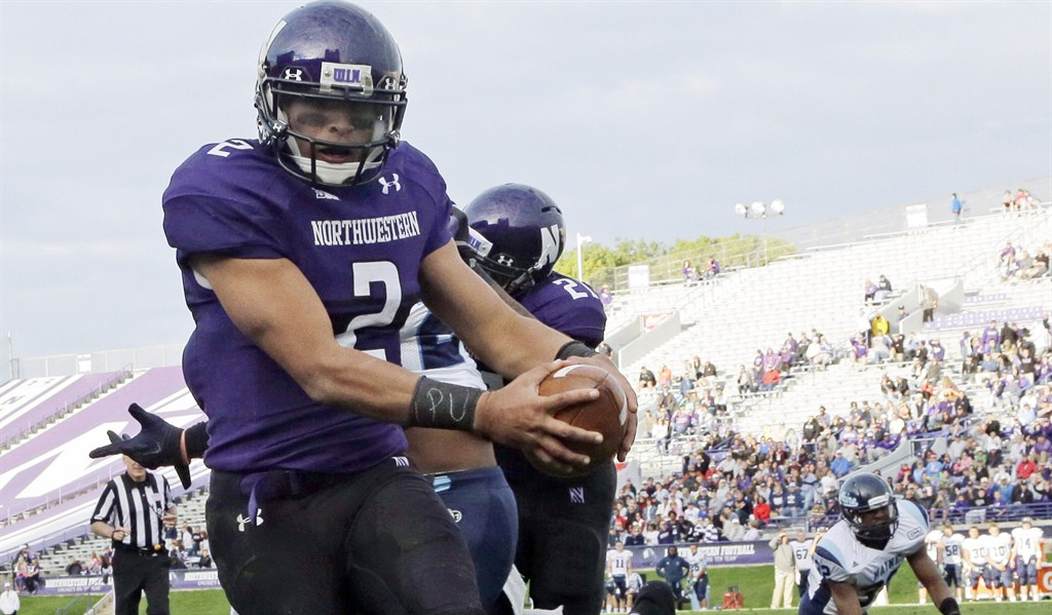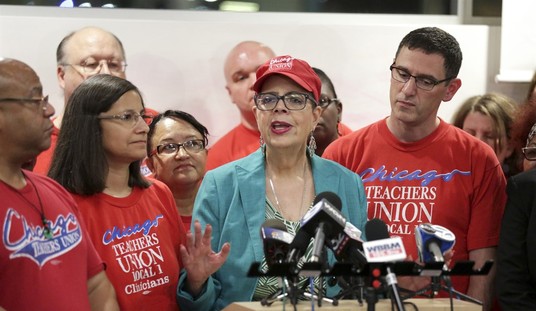A controversial ruling by the regional director of the National Labor Relations Board this week gives college football players the right to form a union. At issue was whether scholarship players should be considered employees of the university, in this case Northwestern University. NLRB Regional Director Peter Ohr ruled that the players are athletes first and students second.
That's probably a fair reading for most college football players in the country at both public and private colleges. But the solution isn't unionization.
I'm actually quite sympathetic to the claims that schools take advantage of top athletes in sports like football and basketball. Sure, college players win full rides, with tuition and room and board paid for, along with perks, including tutoring and better food and accommodations at many schools. But athletic programs are a huge source of funding for the schools. Northwestern raised an estimated $30 million for its football program alone last year -- and the top earner, the Texas Longhorns, raised $139 million.
So where does all the money go? Northwestern says it spent $22 million in expenses for the program. According to tax filings for 2011 reported in USA Today, coach Pat Fitzgerald earned more than $2.2 million, plus another potential $2.5 million in loan forgiveness if he remains at the school. He is the highest paid employee at Northwestern.
But Northwestern, which is a private college, isn't alone or even at the top of the list of highest paying schools. Alabama's Nick Saban tops the list at nearly $5.4 million, which is higher than many NFL head coaches. Indeed, 50 schools paid head coaches more than $2 million a year in 2013, according to a USA Today compilation. Did these guys earn the money? You bet, given their teams' winning records and the amount of money the sport brings into the schools.
And coaches aren't alone in earning the big bucks. The top nine highest paid college athletic directors earned more than $1 million each, topped by Vanderbilt's David Williams, who earned more than $3.2 million last year. But all of this money is earned on the backs of the athletes, who risk life-altering injury every time they go on the field or court.
Recommended
The chief legal officer of the NCAA, which will fight the NLRB ruling, told The Wall Street Journal, "We frequently hear from student athletes, across all sports, that they participate to enhance their overall college experience and for the love of their sport, not to be paid."
I have no doubt these players love playing -- and being a college athlete does enhance one's college experience. But let's be honest. The best players are hoping to parlay their college records into offers from professional sports teams, with the payoff coming in their own multimillion-dollar contracts.
Most college athletes, however, won't see those rewards. But nearly all who play football -- and, increasingly, basketball, baseball and other sports -- will experience wear and tear on their bodies that they may not have anticipated: concussion-related brain injuries, shattered bones, worn-out knees, hips and shoulders, torn muscles, ligaments and tendons.
Unions haven't helped other under-compensated university employees -- teaching assistants and adjuncts -- so I doubt Northwestern football players will benefit much if the NLRB ruling stands. But schools should look for a way to compensate players more fully for the role they play in building a school's reputation and raising money.
For one thing, schools could establish funds that players could later draw on when their injuries come back to bite them. And schools should work much harder to ensure that athletes actually graduate and find jobs when the NFL or NBA doesn't come courting.
In fact, why not pay graduation bonuses to athletes who have put in 50 or 60 hours a week on sports during the season to incentivize them to complete their degrees? Schools also could offer scholarships for graduate study for those athletes smart enough to know that an MBA, a JD or even a teaching certificate is a surer path to a secure economic future than football ever will be.
Of the 9,000 college football players nationally, scouts will choose only 310 for the NFL pool from which teams make their picks. And of those lucky few who make it onto an NFL team, the average career lasts about three seasons.
Colleges have gotten rich off of their football and basketball teams. It's time they delivered for the athletes who make that possible.

























Join the conversation as a VIP Member